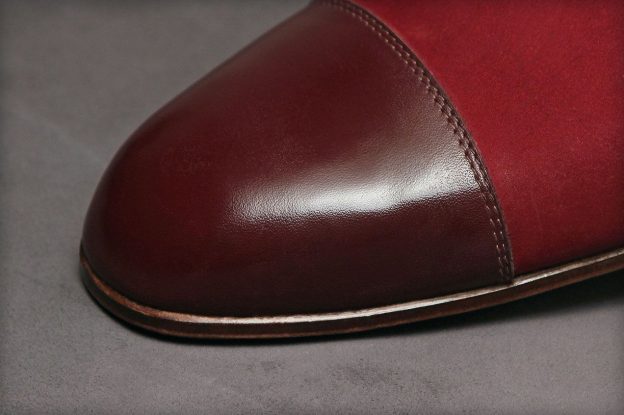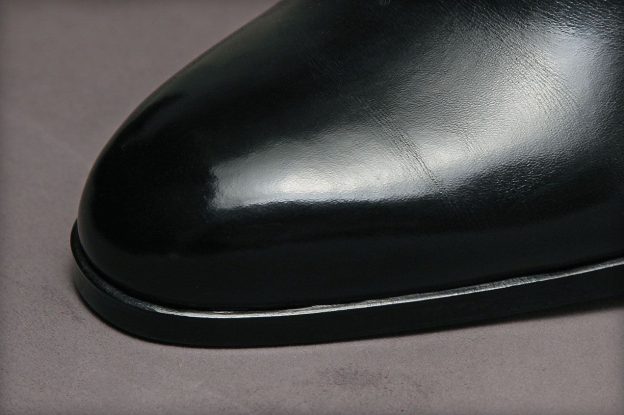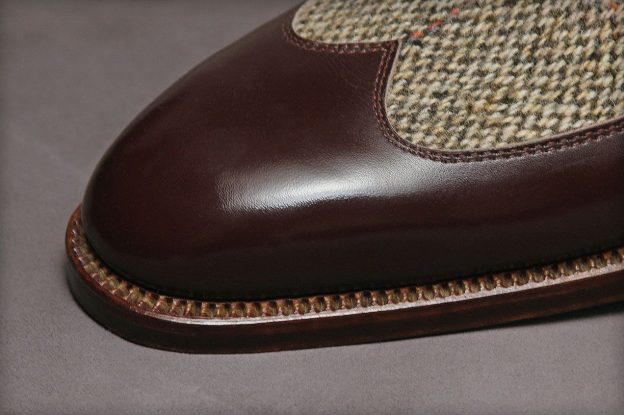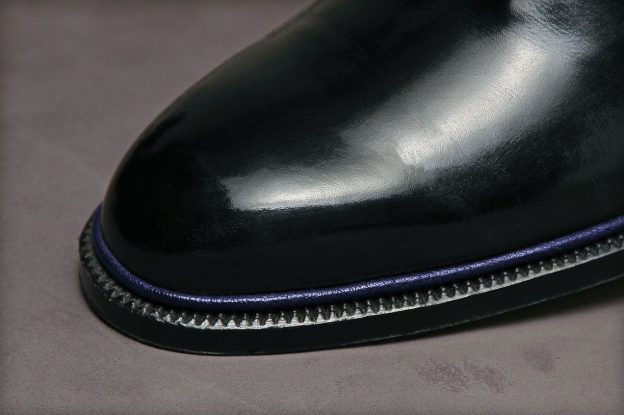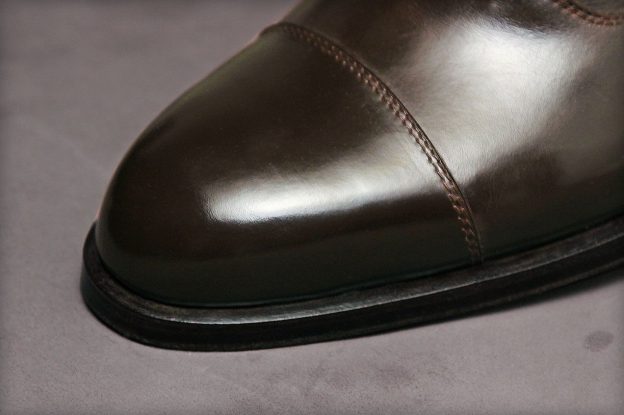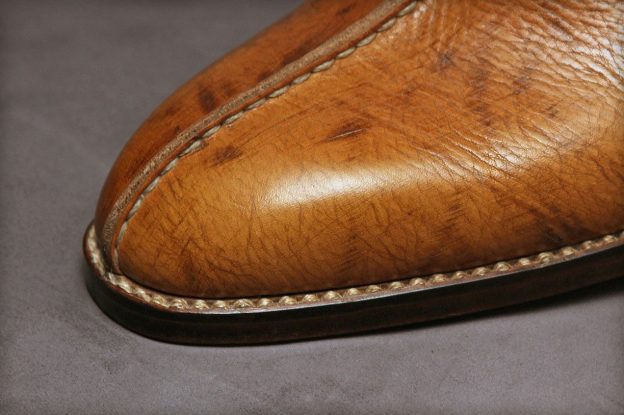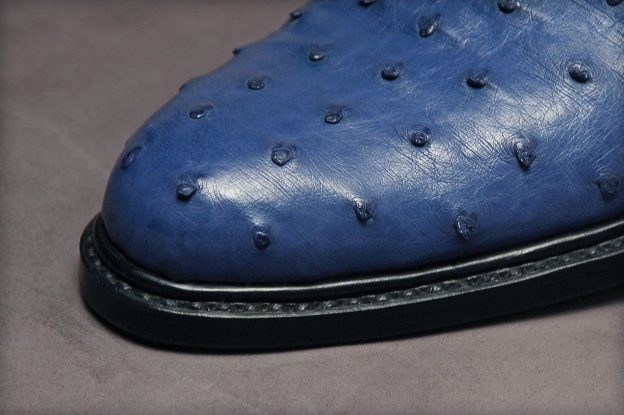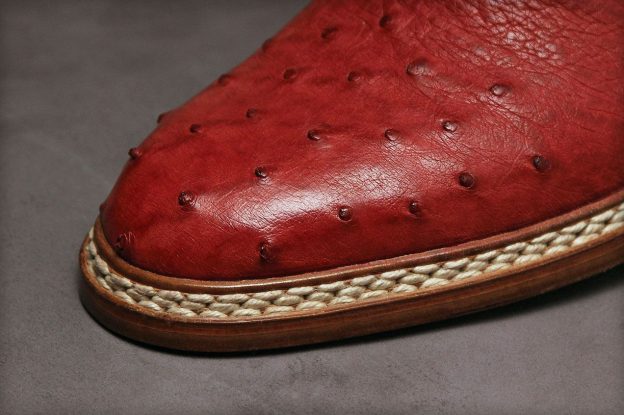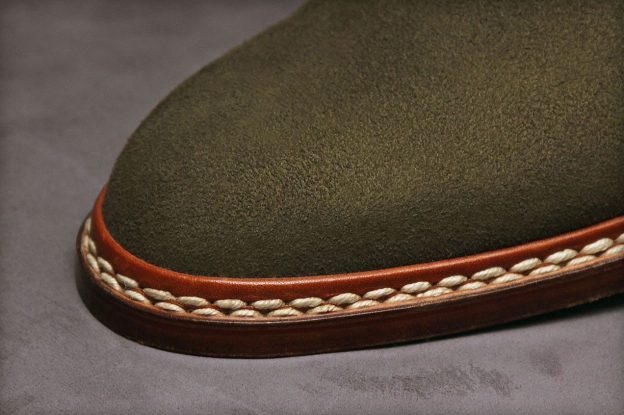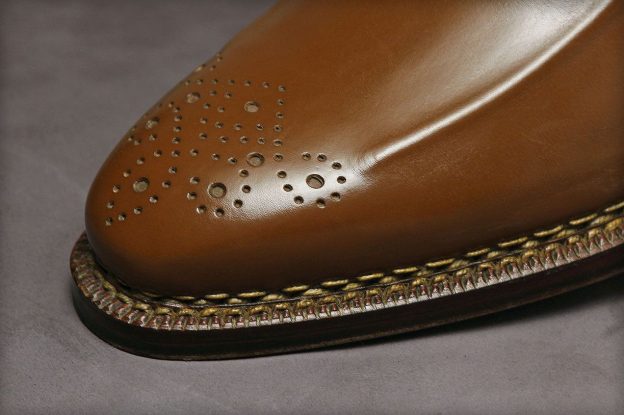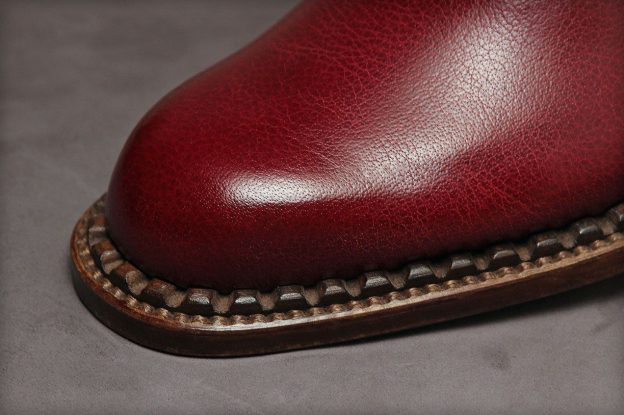Stitching Types
Fhe time-consuming process of handmade shoemaking requires mastery of about a hundred different tasks. In order to justify calling a pair of shoes “hand-sewn”, it is absolutely necessary that one of these tasks in particular be performed: The soles must be joined to the uppers by hand using linen thread spun by the shoemaker.
Depending on the method, there may be one, two, three or even more lines of stitching. How properly the soles are stitched determines how durable the shoes will be. This job, which takes many hours to accomplish and is one of the fundamental and most difficult parts of the entire process, sets apart a product as top-of-the-line. Several methods for sewing soles that have long been used in our workshop are presented below.
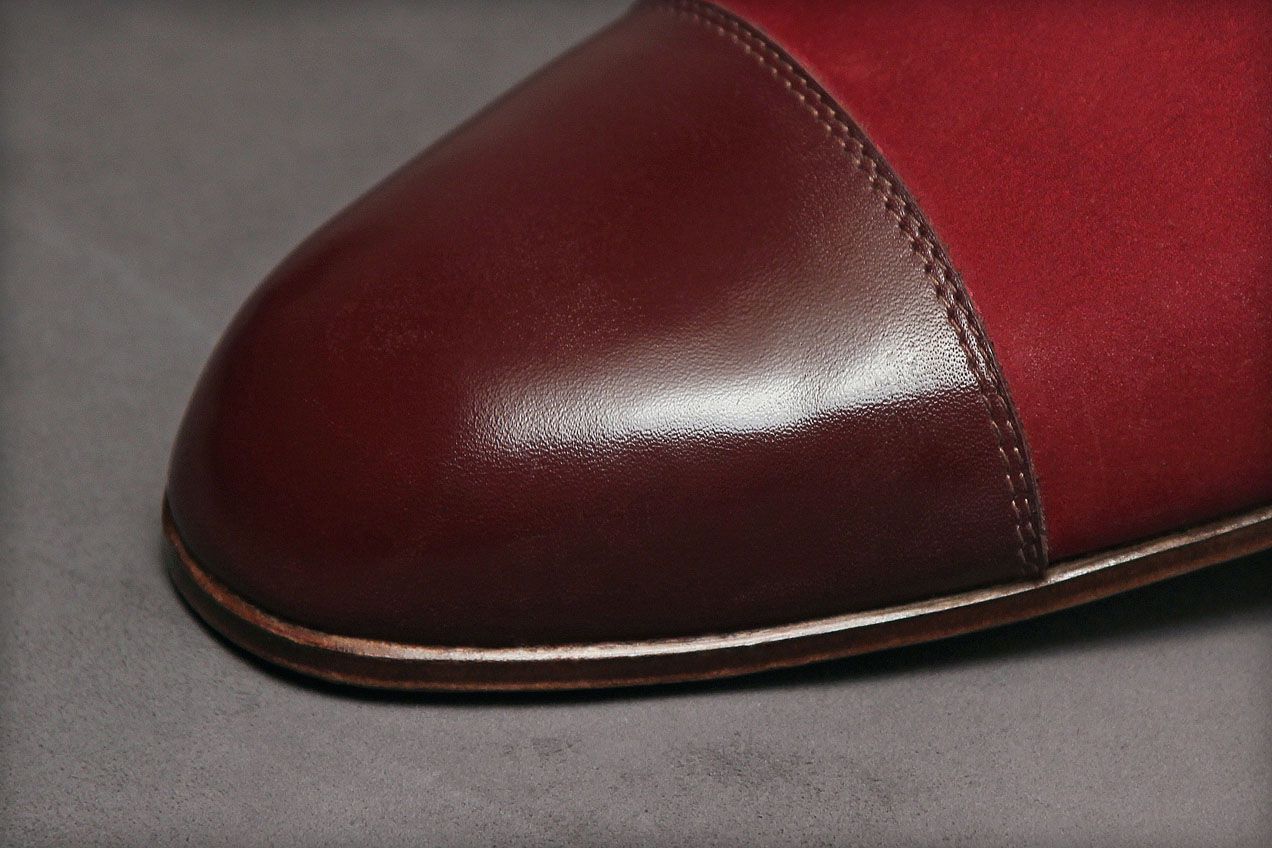
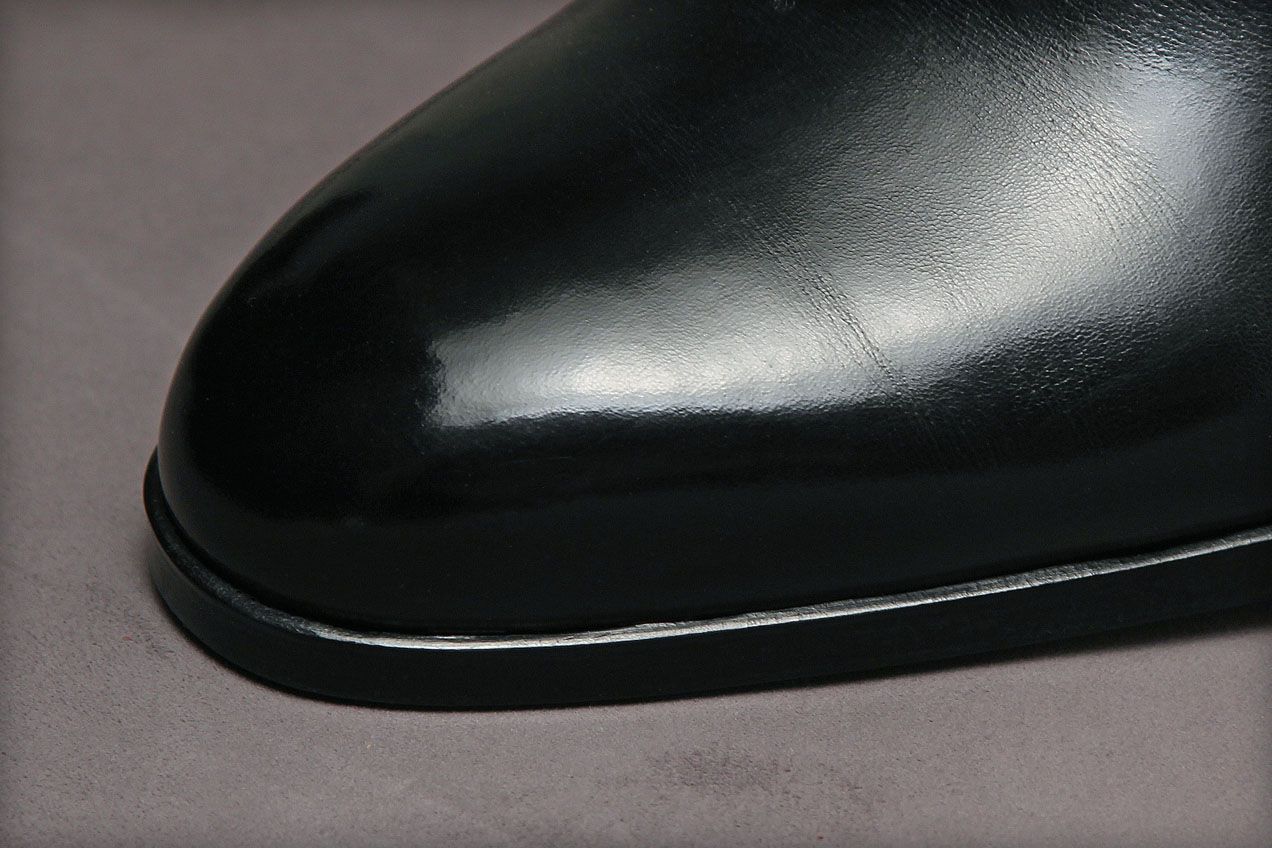
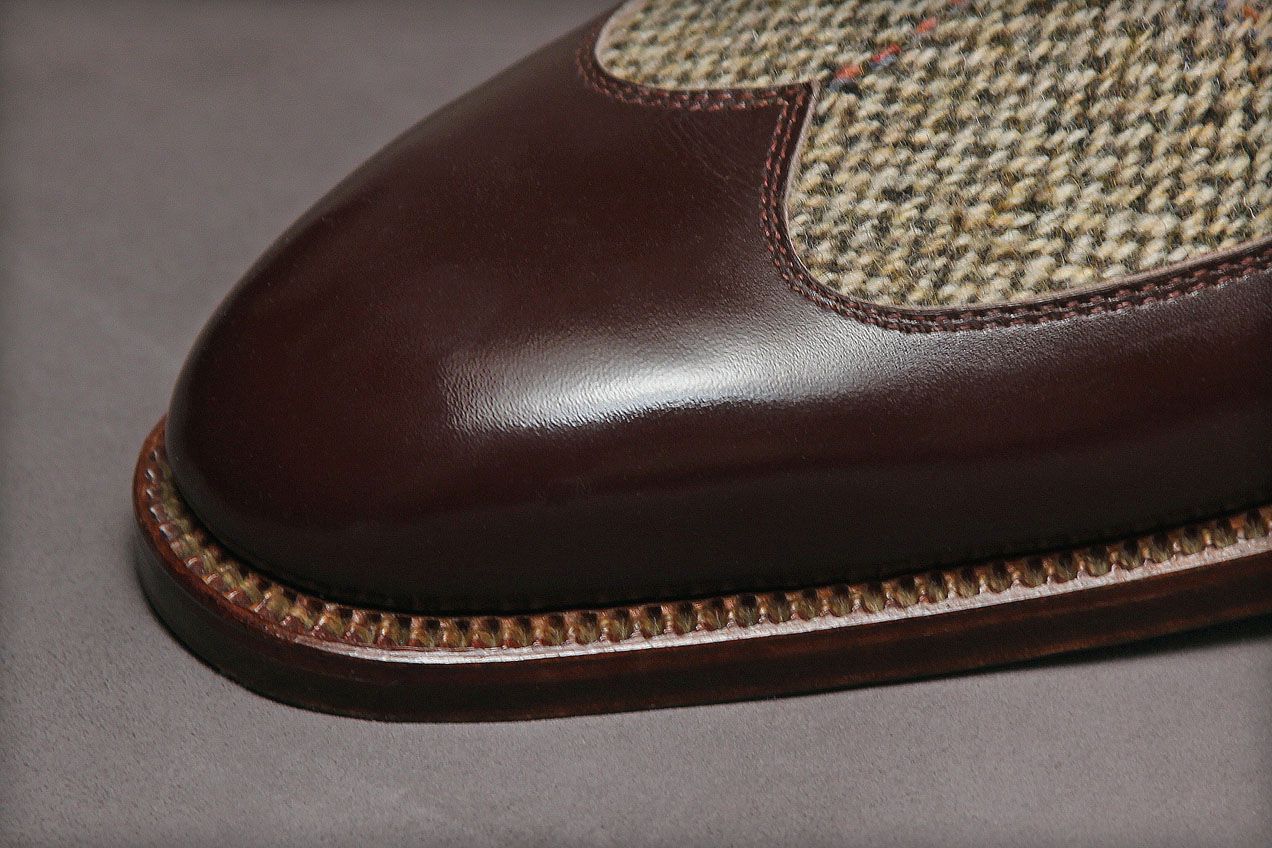
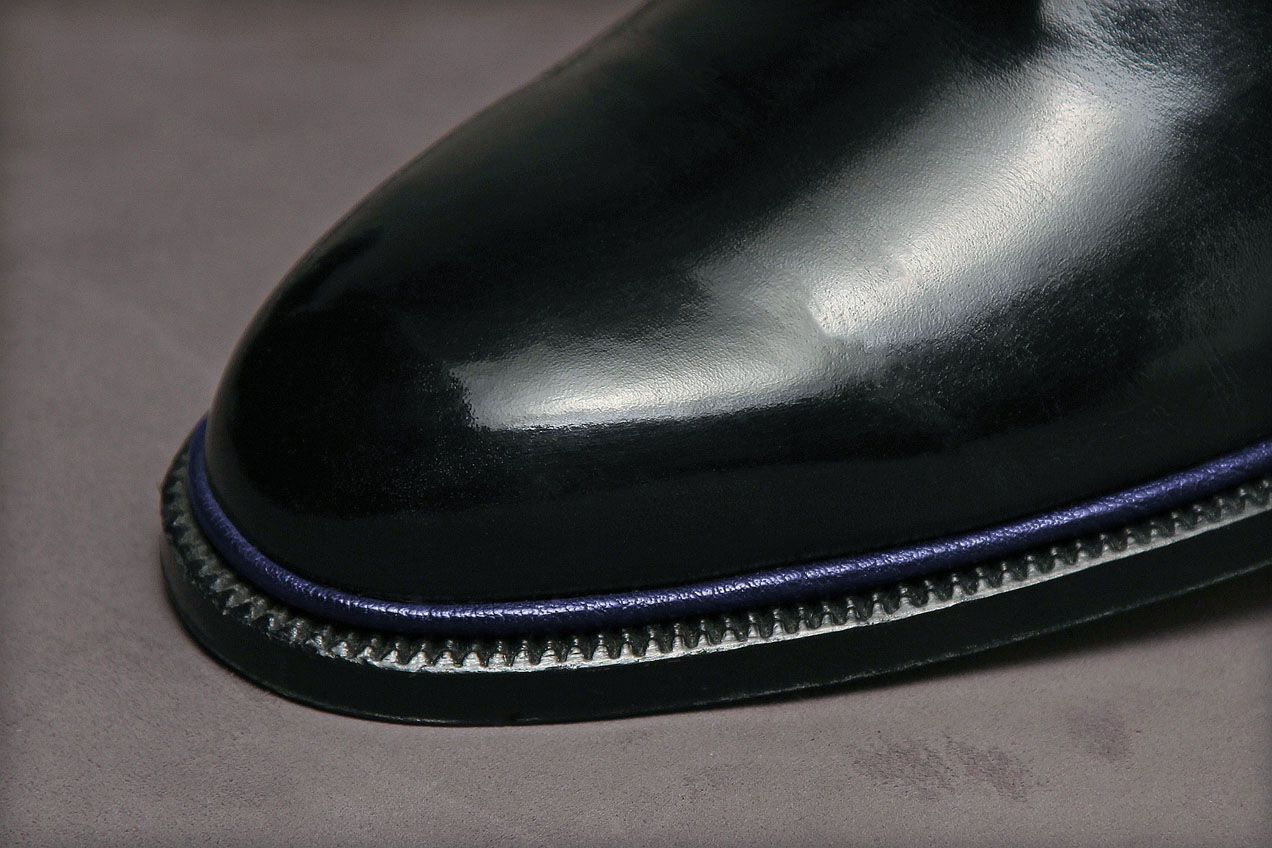
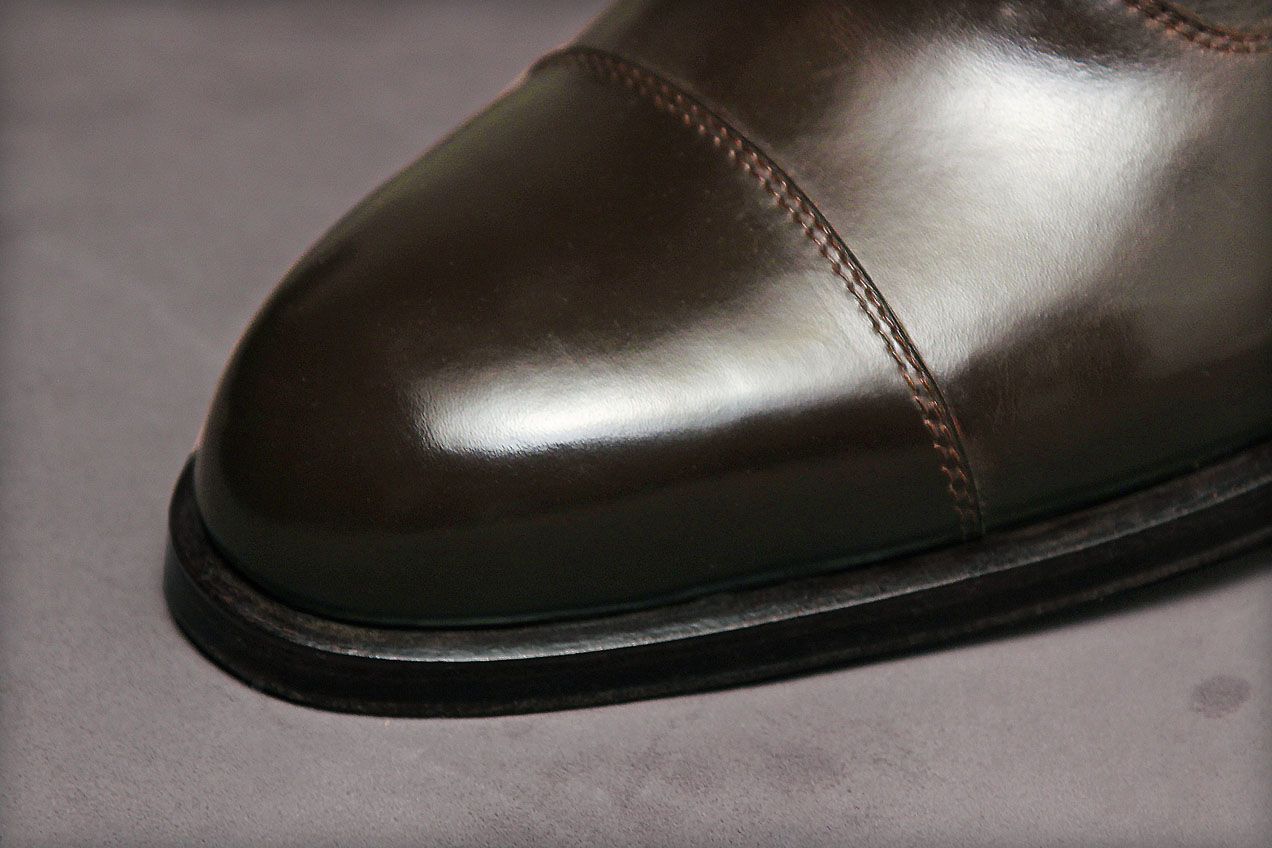

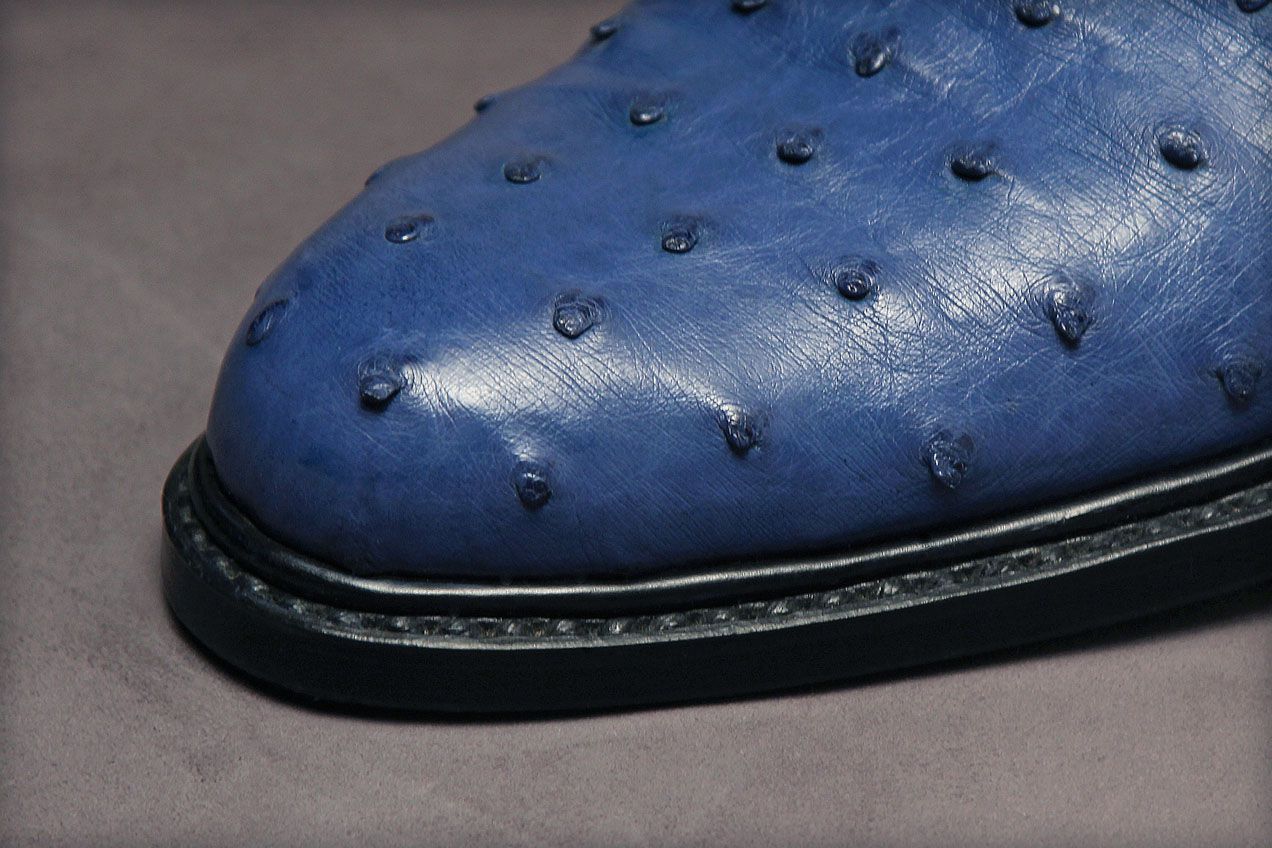


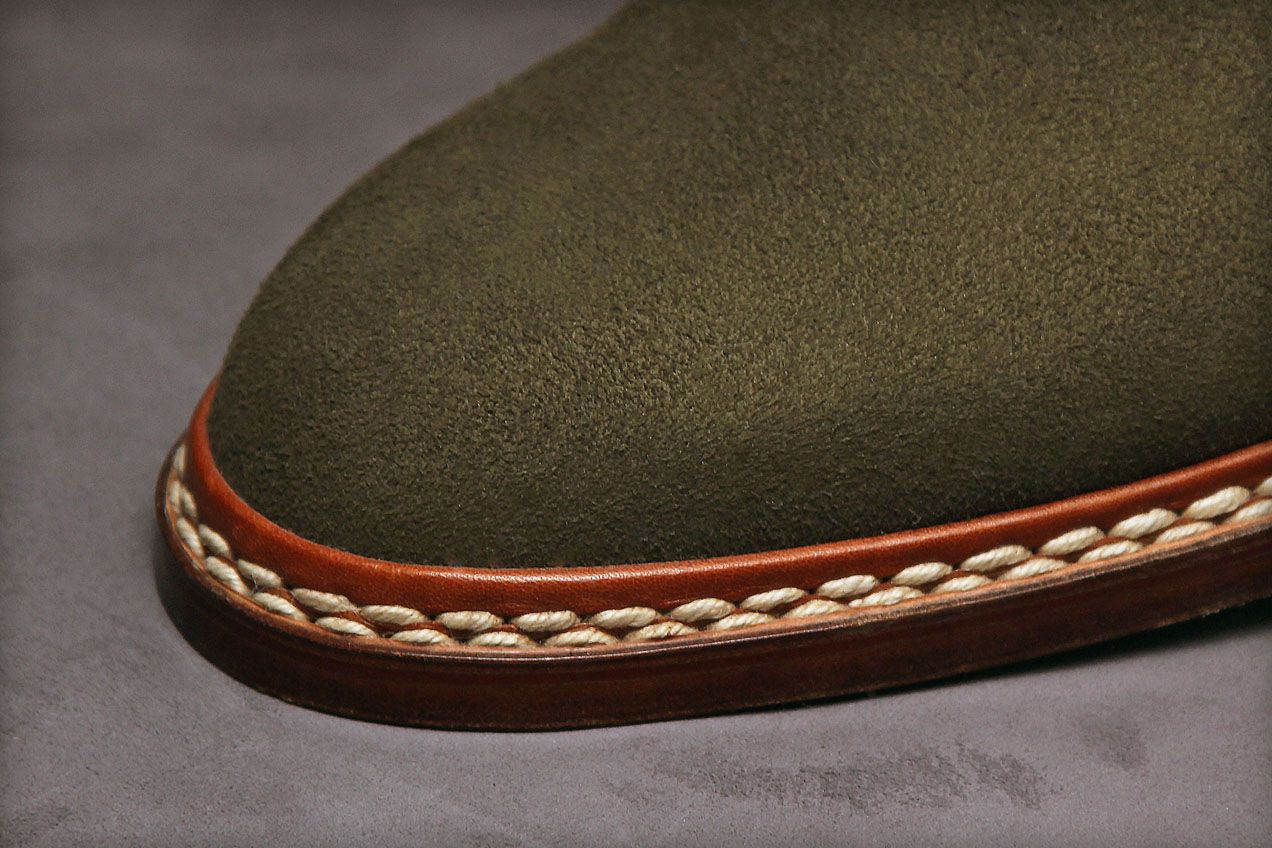
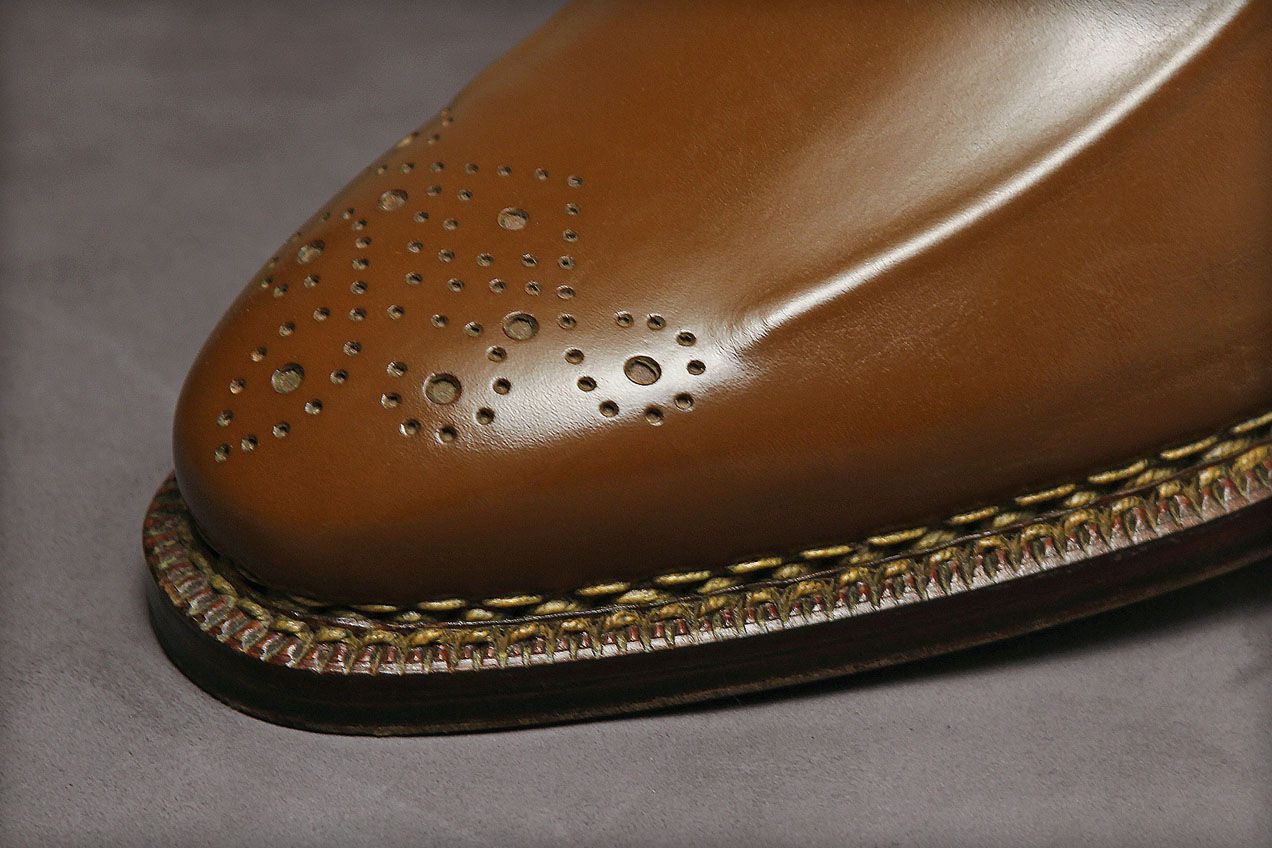
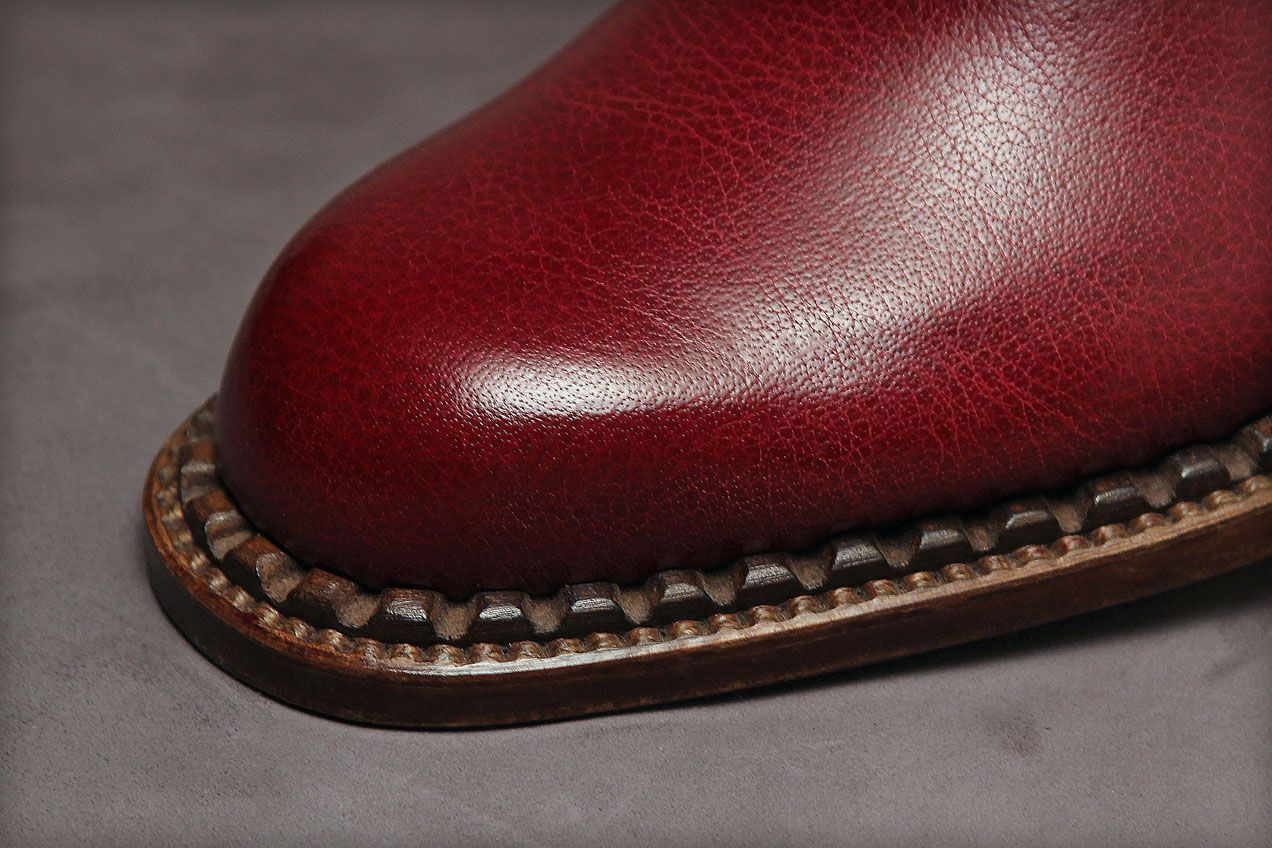
Handwelted soles
The most popular method for line-stitching soles in handmade shoemaking. In practice it requires sewing two lines for different purposes: the first, now invisible, connects the rib to the insole, while the second – known as doubling – connects the rib to the outsole. In order to sew welted soles, the leather soles must be at least 5 mm in thickness. In industrial shoe production, this sewing method was replaced by the Goodyear method, which usually guarantees high quality craftsmanship.
Norwegian stitching
A very old, complicated and durable way of sewing uppers to soles. Developed in Scandinavia for fishermen, longshoremen and foresters who require watertight shoes. At present, this method can be encountered in a few slightly different variants that never fail to emphasize the shoemaker’s high level of skill.
Antique soles
A method for connecting the uppers to the soles that some consider bizarre and others find fascinating. It resembles the pearl method in construction, but the stitching is complimented by a decorative strip of stiff leather that is hand-notched and polished. The provenance of this method is not precisely known, but our prewar employees encountered it in France.
Handwelted soles
The most popular method for line-stitching soles in handmade shoemaking. In practice it requires sewing two lines for different purposes: the first, now invisible, connects the rib to the insole, while the second – known as doubling – connects the rib to the outsole. In order to sew welted soles, the leather soles must be at least 5 mm in thickness. In industrial shoe production, this sewing method was replaced by the Goodyear method, which usually guarantees high quality craftsmanship.
Norwegian stitching
A very old, complicated and durable way of sewing uppers to soles. Developed in Scandinavia for fishermen, longshoremen and foresters who require watertight shoes. At present, this method can be encountered in a few slightly different variants that never fail to emphasize the shoemaker’s high level of skill.
Antique soles
A method for connecting the uppers to the soles that some consider bizarre and others find fascinating. It resembles the pearl method in construction, but the stitching is complimented by a decorative strip of stiff leather that is hand-notched and polished. The provenance of this method is not precisely known, but our prewar employees encountered it in France.

